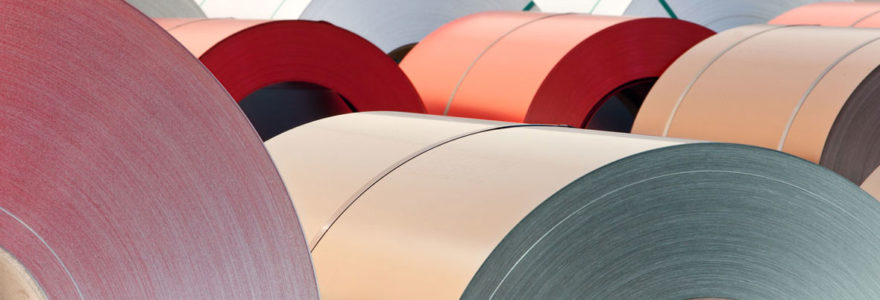Efficient coil coating practices hold the key to achieving superior surface finishing. Unraveling the potential of coil coating involves a deep understanding of selecting appropriate coating systems. Substrate and coating materials significantly impact the final appearance, and the temperature and curing time integral in maintaining coating quality. Delving into the nitty-gritty of the coil coating process, from pre-treatment to curing, helps ensure optimal results. Furthermore, addressing common challenges faced during coil coating promotes quality and longevity of the finished product. This comprehensive guide aims to provide tips and practices for achieving optimal surface finishing through coil coating.
Unlocking the Potential of Coil Coating: Surface Finish Excellence
Coil coating, an essential aspect in achieving surface finish excellence, brings numerous benefits to different metals. This process enhances the adhesion quality, thereby improving the overall aesthetics and protective properties of the material. Proper implementation of coil coating techniques can lead to achieving a high level of tension, which is a crucial factor in material surface excellence.
Mastering the Art of Selecting Suitable Coating Systems
The choice of coil coating systems is largely guided by the type of metal in question. Aluminium, steel, and copper, all require different coating systems for optimal results. It becomes vital to understand these nuances to ensure the excellence of the surface finish. The end goal is to ensure the coating adheres well to the metal, enhancing its properties and lifespan.
Role of Substrate and Coating Material in Surface Finish Finishing
The substrate and coating material significantly influence the surface finishing. The coating material should be compatible with the substrate to ensure high adhesion. This compatibility is determined by the properties of the metals. For example, aluminium may require a different coating material than steel or copper to achieve top-notch results.
Influence of Temperature and Curing Time on Coil Coating Quality
Temperature and curing time play pivotal roles in the quality of coil coating. Proper control of these two factors can enhance the adhesion between the coating and the metal, leading to a high-quality surface finish. Therefore, understanding the influence of temperature and curing time is essential for maintaining surface finish excellence on coated materials.
Customizing the colour of the coil coating is another strategy to consider. This approach not only enhances the aesthetics of the material but also adds to its protective properties. However, to get the best results, there is a need for comprehensive knowledge of coating systems and their application.
For more information on coil coating, Google provides access to a wealth of resources to guide the process.
Breaking down the Coil Coating Process: From Pre-treatment to Curing
In the realm of surface finishing, the coil coating process holds immense significance. This article delves into the coil coating best practices, shedding light on the preparatory stages, paint application techniques, and the curing process.
Preparation and Pre-treatment: A Critical First Step
The coil coating process starts with meticulous preparation and pre-treatment, which is integral for an optimal outcome. Implementing proven methods during this stage ensures the effective application of treatment. Technological advancements have led to the development of sol-gel pre-treatment, a method that promises a superior film.
Paint Application Techniques for Coil Coating
Following pre-treatment, the paint application techniques used play a vital role in the coil coating process. The right equipment, carefully chosen, aids in the smooth application of the coating. Video tutorials provide practical tips to help optimize the temperature and time during this stage. Additionally, chaudelec.fr offers a comprehensive guide detailing step-by-step instructions and common technical issues to avoid.
Curing in Coil Coating: Ensuring Superior Adhesion and Properties
The final phase in the coil coating process involves curing. Proper curing guarantees superior adhesion and properties of the coating. It is during this phase that the applied treatment undergoes processing under controlled time and temperature conditions.
Addressing Common Coil Coating Challenges: Ensuring Quality and Longevity
Within the realm of coil coating applications, numerous challenges present themselves, each threatening the overall quality and longevity of the finished product. Defects often emerge, largely due to improper paint application or substandard substrate material. Therefore, mastering the techniques of painting and defect resolution is imperative for optimal surface finishing. For instance, various video demonstrations provide in-depth guidance on tackling common defects and perfecting paint techniques.
Understanding the intricacies of coil coating tests also plays a vital role.
Another aspect that deserves attention is the avoidance of degradation and corrosion. An informative webinar sheds light on why these issues occur and provides techniques to prevent them. Furthermore, the change in color and discoloration, common problems in coil coating, can be prevented by following advice shared in a series of emails. These resources delve into the causes of these changes and offer solutions to avoid them.
Every aspect of coil coating - from the organic paint used, the substrate sheet, the test methods employed, to the angle of paint application - contributes to the final product's ability to withstand weathering and maintain its intended color. A detailed analysis of these aspects is necessary to ensure that the highest standards are met in both quality and longevity.
The importance of using trusted resources to gain knowledge and overcome challenges in coil coating cannot be overstated. By utilizing the aforementioned resources and adhering to best practices, the likelihood of producing a high-quality, long-lasting coil coating substantially increases.
